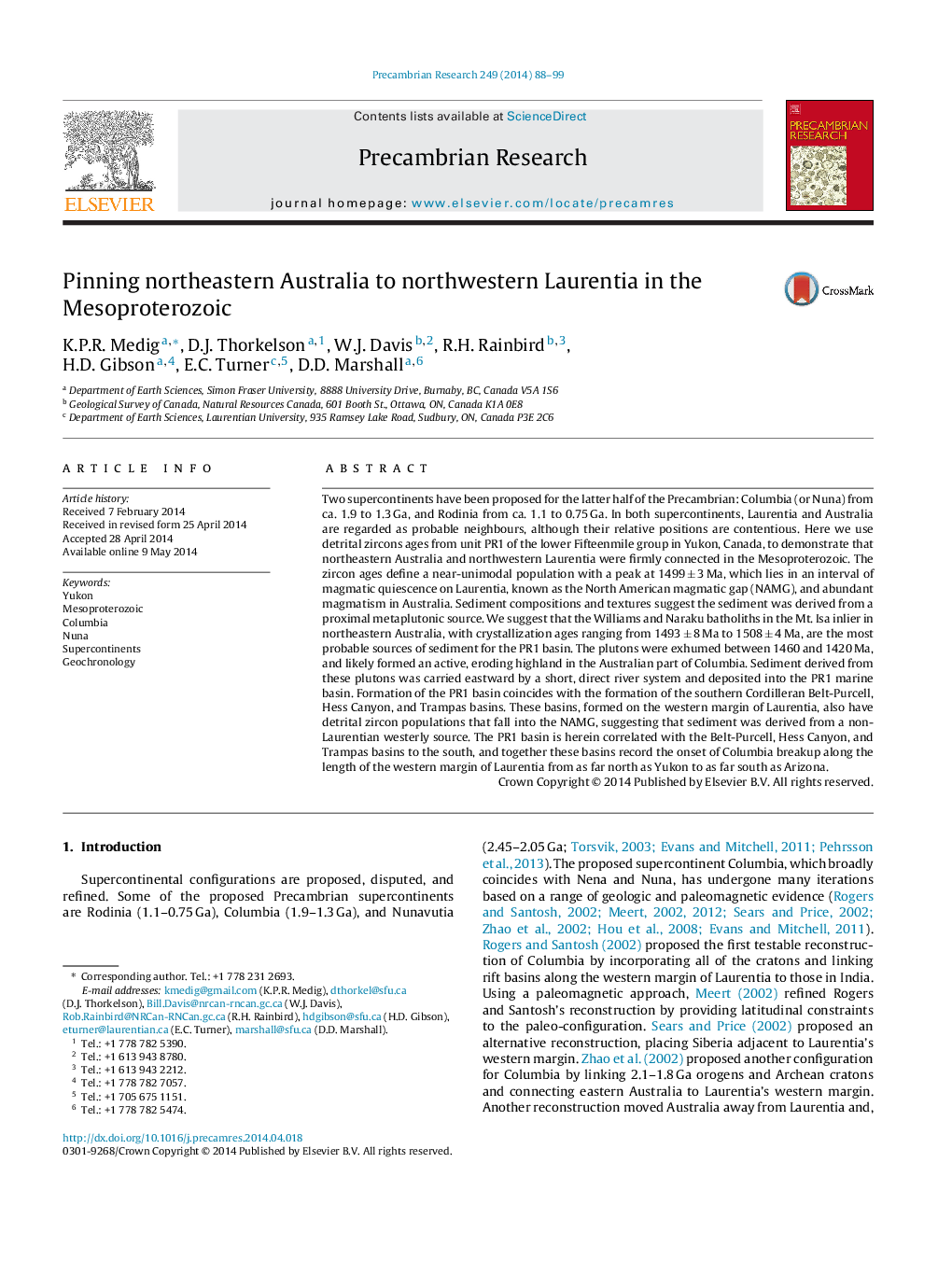| Article ID | Journal | Published Year | Pages | File Type |
|---|---|---|---|---|
| 4722997 | Precambrian Research | 2014 | 12 Pages |
•Identifies a previously unknown near-unimodal detrital zircon population in western Laurentia.•Suggests the Mt. Isa inlier in northeastern Australia is the source for the near-unimodal population.•Provides a new position for Australia with respect to Laurentia during supercontinent Columbia.•Correlates the PR1 basin in Yukon with the Belt-Purcell, Hess Canyon, and Trampas basins in southwest Laurentia.•Suggests that these basins collectively record the break-up of supercontinent Columbia.
Two supercontinents have been proposed for the latter half of the Precambrian: Columbia (or Nuna) from ca. 1.9 to 1.3 Ga, and Rodinia from ca. 1.1 to 0.75 Ga. In both supercontinents, Laurentia and Australia are regarded as probable neighbours, although their relative positions are contentious. Here we use detrital zircons ages from unit PR1 of the lower Fifteenmile group in Yukon, Canada, to demonstrate that northeastern Australia and northwestern Laurentia were firmly connected in the Mesoproterozoic. The zircon ages define a near-unimodal population with a peak at 1499 ± 3 Ma, which lies in an interval of magmatic quiescence on Laurentia, known as the North American magmatic gap (NAMG), and abundant magmatism in Australia. Sediment compositions and textures suggest the sediment was derived from a proximal metaplutonic source. We suggest that the Williams and Naraku batholiths in the Mt. Isa inlier in northeastern Australia, with crystallization ages ranging from 1493 ± 8 Ma to 1508 ± 4 Ma, are the most probable sources of sediment for the PR1 basin. The plutons were exhumed between 1460 and 1420 Ma, and likely formed an active, eroding highland in the Australian part of Columbia. Sediment derived from these plutons was carried eastward by a short, direct river system and deposited into the PR1 marine basin. Formation of the PR1 basin coincides with the formation of the southern Cordilleran Belt-Purcell, Hess Canyon, and Trampas basins. These basins, formed on the western margin of Laurentia, also have detrital zircon populations that fall into the NAMG, suggesting that sediment was derived from a non-Laurentian westerly source. The PR1 basin is herein correlated with the Belt-Purcell, Hess Canyon, and Trampas basins to the south, and together these basins record the onset of Columbia breakup along the length of the western margin of Laurentia from as far north as Yukon to as far south as Arizona.
